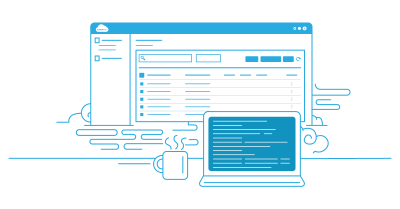Facing critical issues with Amazon S3 is a rite of passage for any AWS Solutions Architect or Administrator. Even seasoned professionals find themselves searching for precise answers when configuration challenges arise, especially in high-pressure situations. We’re here to deliver actionable Amazon S3 FAQs tailored for new and experienced AWS admins seeking immediate, reliable solutions.
Why Solutions Architects Struggle With S3
Amazon S3’s flexibility is matched by complexity. Cost management pitfalls (storage class selection, data transfer charges, lifecycle missteps), unclear security boundaries (bucket policy vs. IAM, public access, encryption), and performance tuning (request rates, transfer acceleration, large file handling) routinely trip teams up. AWS documentation can scatter essential details, but we consolidate the must-knows for quick troubleshooting and design excellence.
The S3 Mastery Framework
Focus on technical accuracy, financial efficiency, and security best practices. EOur S3 FAQs reflect practical steps from AWS documentation, accounting for scalability and compliance needs.
1. Which S3 Storage Class Should I Choose?
Choose classes matching access patterns and cost constraints:
- Standard: Frequent access
- Intelligent-Tiering: Unpredictable access
- Infrequent Access (IA): Backups (≥30-day minimum storage)
- Glacier/Deep Archive: Long-term, rarely accessed archives (≥90/180-day minimum storage)
- Data stored in S3 Standard no longer requires a 30-day minimum but IA/Glacier classes do.
You can find more details here.
2. How Do I Secure S3 Buckets Properly?
- Enable “Block Public Access” settings by default.
- Use bucket policies (for resources) and IAM policies (for users).
- Encrypt data at rest (SSE-S3 for managed keys; SSE-KMS for your keys).
- Leverage Access Analyzer to audit permissions and detect misconfigurations.
You can find more details here.
3. What’s the Best Way to Optimize S3 Costs?
- Apply lifecycle policies to automate object transitions between classes.
- Review S3 Storage Class Analysis for savings opportunities.
- Reduce API costs by batching requests and leverage CloudFront for distribution.
- Track usage with S3 Inventory and cost allocation tags.
4. How Do I Handle S3 Performance at Scale?
- Vary object key prefixes to distribute load.
- Use multi-part uploads for large files (>100MB).
- Enable Transfer Acceleration for global users.
- Employ exponential backoff for request retries to manage throttling.
5. What’s the Difference Between S3 Replication Options?
- Cross-Region Replication (CRR): For disaster recovery, increases compliance/costs.
- Same-Region Replication (SRR): Provides high availability within a region.
- Both support granular replication via tags/prefix filters.
6. How Do I Implement S3 Event Notifications Correctly?
- Set up notifications for create/delete events.
- Integrate with Lambda, SQS, SNS as needed.
- Filter events by prefix/suffix and implement error/dead-letter handling.
7. What Are S3 Consistency Guarantees?
S3 delivers strong read-after-write consistency for all operations. Reads reflect the latest write, including listings, eliminating “eventual consistency” architectural workarounds.
8. How Do I Monitor and Troubleshoot S3 Issues?
- Activate CloudWatch metrics and alarms.
- Enable S3 access logging for forensic and compliance needs.
- Enforce security with AWS Config rules and regular policy audits.
9. What’s the Best Backup and Disaster Recovery Strategy?
- Use CRR for mission-critical data backups.
- Select storage classes based on desired RTO.
- Test restores regularly and maintain documentation for recovery.
- Consider cross-account backup for isolation/security.
You can find more details here.
10. How Do I Integrate S3 With Other AWS Services?
- Use CloudFront for global distribution.
- Set Lambda triggers for data transformation.
- Integrate with AWS Glue (ETL) and Athena (SQL queries).
- Automate database backups via native AWS integrations.
Amazon S3 Pro Tips
- Standardize bucket/object naming for automation.
- Tag resources for refined cost tracking and governance.
- Combine versioning for key data with lifecycle policies for cost management.
- Vet permissions and policies in non-prod environments first.
- Log architecture decisions and schedule recurring reviews.
- Use Infrastructure as Code tools (CloudFormation, Terraform) for consistency.
Master S3 With Confidence
Practical expertise in Amazon S3 is defined by fast, knowledgeable problem-solving, not memorization. Using this FAQ guide, new AWS admins can confidently address challenges as they arise. Drive efficiency, cost savings, and secure design.



Leave A Comment